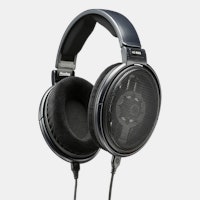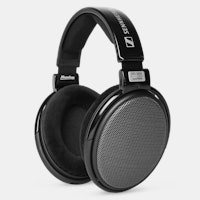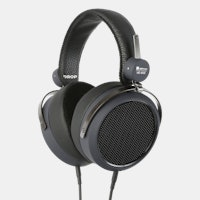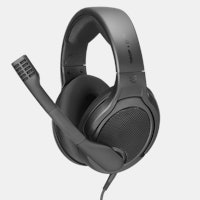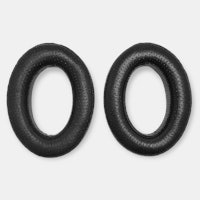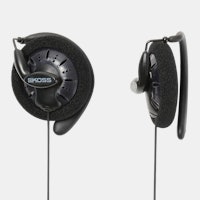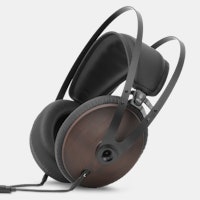Click to view our Accessibility Statement or contact us with accessibility-related questions











Showing 1 of 11 conversations about:

Etymotic MK5 IEMs

jakob.s
72
Dec 1, 2020
I can't ever help but be a bit bothered that most of the Drops from Ety cut off at 15-18kHz on the freq response. Does this ever sway a decision for anyone else? I would think even a 44.1kHz PCM could push these beyond that and affect the sound.
Qwervy
464
Dec 2, 2020
jakob.sNo, it doesn't sway a decision from me. The graphs I've seen only cut of at about 17khz which is perfectly fine. Most people cant hear above 15 to 17khz anyway and it can make the sound sound less grainy and smoother. More on that is that 15khz-20khz sound very similar and the majority of cymbal and s-region information happens around 7khz to 13 khz.
A lot of the time drivers aren't capable of providing a nice clean 15khz to 20khz anyway and end up sounding grainy and gross so not having that isn't a big negative to me.

jakob.s
72
Dec 4, 2020
QwervyWould it possibly distort the sound if 20kHz was pushed into a headphone not rated to go that high though? I know Ety products are supposed to be very detailed and I wouldn't want that to get messed up by pushing the limits of less-capable drivers. In testing I can usually hear up to 19.5-20kHz fairly reliably.
Qwervy
464
Dec 5, 2020
jakob.sIt really depends on the distortion response of the driver, which is usually separate to the frequency response. In the vast majority of cases this isn't an issue. Very loud low frequencies on the other hand tend to have a much easier time distorting other frequencies as they require the driver to move much further in order to achieve the same volume.
Another thing to consider is that distortion presents itself as an increase in amplitude or creation of higher frequencies or harmonics of the original sound/fundamental. This means that if you have a loud sound at 18khz, the resulting distortion will most likely be above 20khz. In fact harmonic distortion occurs in a fairly repeatable graph. (This is ignoring other small things that occur near the fundamental as they are usually so much lower in volume that they are the last things to be heard.)
Harmonic distortion tends to follow a pattern of double the fundamental frequency, with each next harmonic being half of the previous gap. (10hz fundamental, 20hz first harmonic, 25hz second harmonic etc etc. Note: this is simplified and actual harmonics aren't perfect integers like 1x 2x 2.5x 2.75x.) Point is that if you have a sound at 18khz, the next part of the harmonic distortion is going to occur at 36khz which is well above audible range.
PRODUCTS YOU MAY LIKE
Trending Posts in Audiophile

pspringheights
Prestige Spring Heights Apartments
Prestige Spring Heights is a way of life rather than merely a place to call home. Located in South Hyderabad's Rajendra Nagar, this brand-new luxury township offers an extensive range of excellent facilities to enhance your standard of life. This area is ideal for people, families, and professionals because every feature has been carefully designed to improve your comfort, convenience, and well-being. The project provides inhabitants who are worried about their health with cutting-edge fitness centres, including a fully furnished gym with synchronic equipment. You'll find everything you need to keep up a healthy civilization within easy reach, whether you're a regular gym-goer or just trying to stay active. Prestige Spring Heights Amenities Additionally, the attractively composed swimming pools provide the ideal haven for relaxation when the time comes. Enjoy the peaceful surroundings by lounging by the pool or diving in for a devitalizing dip. Prestige Spring Heights Apartments...
Jan 10, 2025

sudhirmehta
decor item
Explore Peepul Tree's Home and Living collection, offering unique decor items that blend traditional craftsmanship with modern aesthetics. From handcrafted artifacts to elegant home accents, discover pieces that add charm and personality to your spaces. Each decor item is thoughtfully designed to create a harmonious and inviting atmosphere in your home. Embrace sustainable living with artisanal products made from eco-friendly materials. Elevate your interior decor with timeless, handcrafted treasures from Peepul Tree. Shop now to transform your living spaces with unmatched elegance and style. Contact Now: https://www.peepultree.world/category/home-and-living
Jan 9, 2025

TheDuffer
Right ear keeps cutting out
So I have a PC38x headset that I bought a few years back. I moved away from home for work, and left the headset there with my gaming PC. I used it maybe 2 or 3 times before I left, and it always had the problem of it cutting out in my right ear phone. It makes like a crackling noise like something is loose, and then cuts out the audio entirely. Sometimes it works for a few minutes, but inevitably cuts out on the right side again. I am wondering if there is a fix? Or could I be shipped a new one?
Jan 6, 2025
Frankbarone1
Please suggest headphones for me.
Please someone here help buy a headphone for my use case- listen mostly Indian music ( old and new Bollywood songs ) . play them on my iPhone. So need to be wireless. must be light and comfortable for small ears and 3-4 hours of listening. noise canceling is not important. budget is around $150. i am not audiophile by any means and do not understand much of the jargon. Just want something that sounds good and is comfortable on my ears while I work from home. thank you all.
Jan 3, 2025

Hauntednsk
E-MU Teak Repair - Any Experience?
Hello, I am wondering if anybody has any experience contacting E-MU support, sending them headphones for repair, or getting them back fixed. Can anybody share any experience? I have been emailing them for a while now, but nobody has responded. Thank you.
Dec 29, 2024

murphdc
pc38x still has audio coming through with the volume dial turned all the way down
Finally got my hands on the pc38x. I mostly wanted to try this headset because of all the good things i heard about it. Out of the box i wasn’t really impressed. My 50 dollar astros were just as loud if not louder. After setting up an EQ on dolby access i got them sounding a little better. But one thing that really bothers me is the volume dial on the headset. When i turn it all the way down there’s so much audio still coming through, like the headset is turned up 10-20%. Is this normal?
Dec 28, 2024

MrChiSox
My little room work in progress.
It's not done, I apologize for the mess. Health issues have put this on hold. It's a small room and I'm likely to sell off my KEF 104.2 loudspeakers and some other gear after surrendering the living room to my wife after her patience of 35 years. She deserved her own little sanctuary.
Dec 26, 2024
